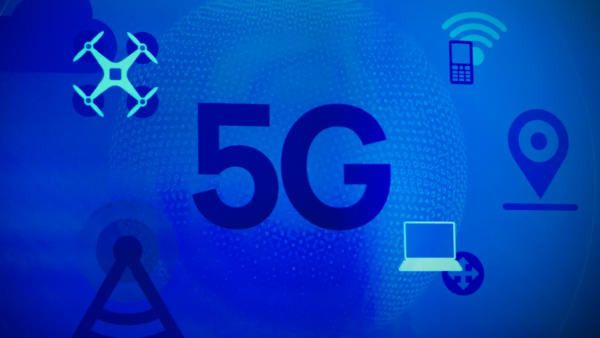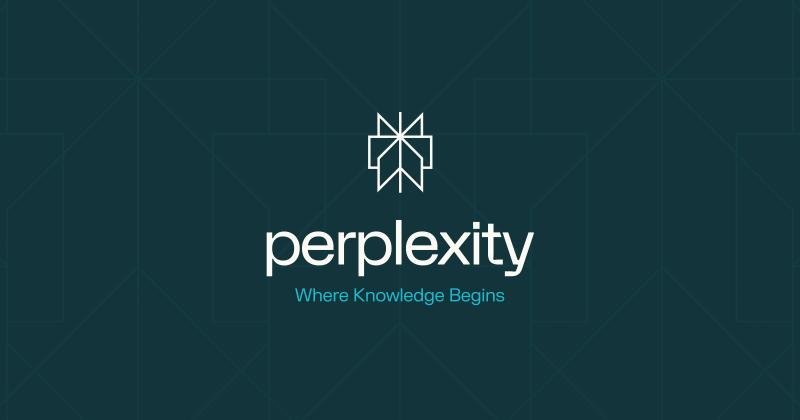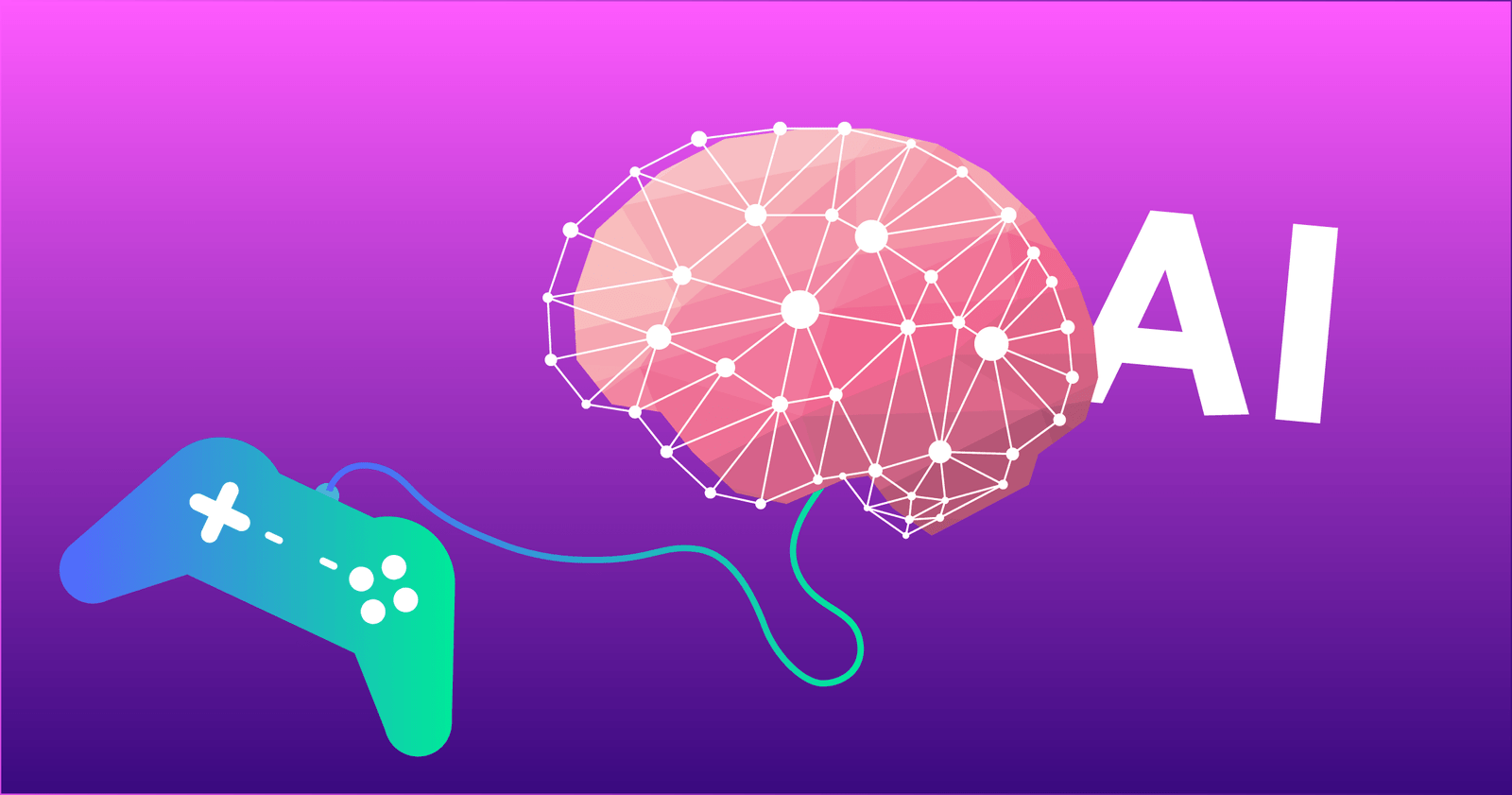What Is 5G Home Internet? Everything you need to know
Like any essential utility in most homes, businesses, and schools, the Internet is now a fundamental necessity for daily life….

Like any essential utility in most homes, businesses, and schools, the Internet is now a fundamental necessity for daily life. However, most of us still need to be more satisfied with our existing service providers’ slow, sporadic, and pricy connections. Here comes 5G home internet, a new-age technology that will redefine how the world connects to cyberspace. 5G, or the fifth generation of wireless technology, means a lot for the enhancements of people’s lives than just a faster data bar in smartphones. This game changer gives us the taste of high speed, very low latency (as in real-time response time), and the capability of handling many devices simultaneously. In contrast to its antecedents that called for networks over a lower range frequency or bandwidth, 5G envisions a data superhighway that does not require a cable connection to get into your house. In this article, let us investigate the 5G home internet world from every angle, ranging from its advantage, comparison to archaic technologies such as fibers, and answer to frequently asked questions to enable consumers to take on this future technology.
What is 5G?
5G technology is an advanced move of wireless technology, referred to as the fifth generation. It is a new generation of mobile networks that improve 4G by adopting progressive technology like millimeter waves for data transfer at higher speeds. 5G is a term many guys relate to the faster data symbol on mobile phones, but it hosts a much broader prospect than just mobile browsing. 5G offers a suite of groundbreaking features:5G offers a suite of groundbreaking features.
Main Features of 5G home internet:

Here are the main features and advantages of 5G home internet services:
Faster Speeds: New cinematic systems and other series, music, and other content downloads will not take days as it is with 3G and 4G, while restrictive buffering is also expected to be a thing of the past with 5G. 5G, with its significantly higher data transfer rates, will have peak data rates more than ten times that of 4G networks.
Lower Latency
Latency is an expression that characterizes the time that elapses between the transmission of the first signal within one device and the arrival of the said signal at the next device. It has a low latency of 4 milliseconds, essential for gaming, video conferencing, and remote working.
Greater Capacity
5G can allow more connected devices on a particular network than 4G. This higher capacity is still important, especially for the Internet of Things (IoT), whose main focus is to allow billions of devices to be connected and share information.
High-Speed Downloads
Nigeria’s 5G home internet provides download speeds of up to one gigabit per second.
Support for Multiple Devices
High throughputs also provide the ability to support multiple devices all at once, adding to the fact that smart homes necessitate.
Reliable Connectivity
The stable and elevated speed of 5G ensures that video calls and streaming are not disrupted by lags or even freezes.
Empowerment of Smart Homes and Cities
These three highlighted areas require reliable connectivity, which 5 G offers. This makes it vital for home automation devices, telemedicine solutions, and IoT connections.
Enhanced Security
Citing the aspects of encrypted data transmission of 5G, it is evident that dangers posed by public Wi-Fi are avoided.
Flexibility and Mobility
Another advantage of 5G wireless technology is that it can be easily installed, relocated, and tailored to accommodate changes in living accommodations, unlike fiber optic internet facilities that require cables to be laid down.
Social Impact
While speed optimization is discerned with 5G Home Internet, its connectivity innovation is foreseen to transform social aspects of existence with more innovative homes and cities, advance the prospects of Telemedicine, and constantly adaptable support for multifarious connective devices.
| Category | Fiber Optic | 5G Home Internet |
| Speed and Performance | Speed: Equal upload and download speeds, ideal for activities requiring consistent bandwidth, such as uploading large files or video conferencing. Consistency: Minimal signal loss over long distances ensures stable performance. | Speed: Offers impressive gigabit-range speeds, suitable for multiple high-bandwidth applications like 4K video streaming and online gaming. Consistency: Speeds can vary depending on network load and proximity to towers. |
| Installation and Infrastructure | Involves trenching and laying fiber optic cables, a time-consuming and potentially disruptive process. Often limited to urban and suburban areas. | Fast and straightforward, uses existing cellular towers and avoids the need for cables. Ideal for renters, those who move frequently, and rural or remote areas. |
| Cost Considerations | Higher initial installation fees but stable and reasonable long-term tariffs. | Lower installation costs, but expenses can vary based on data plans and coverage; potential data caps and overage charges. |
| Reliability and Stability | High reliability with minimal signal interference, less affected by weather conditions or external disruptions. | Network congestion, weather, and distance from towers can affect reliability, leading to occasional speed fluctuations. |
| Future-Proofing | Fiber optic plans typically do not have data caps. | Often has data caps; choose a plan that meets your data usage needs to avoid additional charges. |
| Other Considerations | Data Caps: Fiber optic plans typically do not have data caps. Secure connection; use strong Wi-Fi passwords and safe browsing practices to minimize risks. | Data Caps: Often has data caps; choose a plan that meets your data usage needs to avoid additional charges. Security: Secure connection; use strong Wi-Fi passwords and safe browsing practices to minimize risks. |
Use Cases and Applications of 5G Home Internet
Some refer to the 5G Home Internet as an advancement in technology with download accelerations; it is an advancement in technology meant to revolutionize connections, work, and people’s interaction.
Smart Home Experience
Since 5G networks have the capacity for many devices and several layers of automation, smart home devices, including thermostats, lighting, security cameras, and others, operate smoothly and without any issues. The low latency of 5G allows monitoring and control, such as showing a livestream of a doorbell camera, adjusting the temperature in the house when you’re on vacation, or unlocking smart locks for deliveries from a distant location.
Remote Work and Education
Regarding online work and schooling, the 5G connection to the Internet guarantees a stable and fast connection to work. It enables smooth Facetime for video calling, instant messaging applications, and reach to online resources for work, thus fulfilling its purpose of providing a productive work-from-home experience. Technology-savvy educators can use 5G by allowing students to engage with virtual classes that involve high-quality video and lecture-style participation, enabling students to work on projects in real-time with no buffering issues and access learning materials.
Entertainment and Gaming
5G impacts and shapes the entertainment and gaming industries with the help of the new communication technology. The section has very high bandwidth, making it easy to stream high definition and even 4K content without any hindrance, such as buffering and pixelation. Gamers are well aware of the ultra-low latency, which ensures near-photonic responsiveness that sets players apart and makes the outer edges of the gaming environment all the more realistic.
Healthcare and Telemedicine
In healthcare, 5G paperwork expands Telemedicine, incorporating distant consultations, specialist sessions, and patient tracking. It causes quicker and more accurate diagnosis, increased healthcare accessibility, and enhanced general medical care specifically for needy regions. Prompt and efficient transmission of medical information like high-quality images or even biosignals from a distant location can become lifesaving, especially in emergency cases of the need for consulting a specialist.
Challenges and Considerations for 5G Home Internet
Coverage Gap
Since the rollout of 5G technology is progressing quickly, more coverage still needs to be addressed. This means that limited geographical locations, including rural ones, may require additional connections to 5G networks. Providers do not sit idly; they are constructing more infrastructure, and coverage maps are dynamic.
Navigating the Health Debate
Switching the next-generation network from 4G to 5G has been objected to due to the health effects of radiation. However, after investigating through thorough research even, agencies like the World Health Organization (WHO) have not been able to link any health effects with the use of 5G.
Cost Considerations
As of 2021, the pricing of 5G home internet depends more on the provider offering home broadband services, data packages offered, and regions. This applies to people whose data usage is within this limit, as they should consider their data use pattern and choose a plan that does not overburden their wallet.
Technical Limitation
Interference from nearby structures & massive vegetation and any form of hindrance can affect the signals of 5G. This can cause signal strength and quality to drop in certain weak spots, especially in big cities and highly populated areas. It might be helpful for you to know these constraints so that you can get the best experience with 5G home internet.
Future of 5G Home Internet

5G home internet could revolutionize connectivity by enhancing the Internet of Things with speeds beyond 10 Gbps, thanks to technologies like millimeter wave (mmWave). This will enable quick data transfers, even for complex data, and create a global environment where smart devices and wearables work seamlessly together. As device compatibility improves and adoption increases, costs will decrease, making 5G home internet more accessible, especially in rural areas. Analysts predict that 5G could replace wired connections, leading to smart homes with instant autonomy and personalized experiences. Industries such as telemedicine will benefit from improved remote patient monitoring, while entertainment will shift to high-definition, glitch-free streaming and cloud gaming. Additionally, smart cities will experience efficient traffic flow and enhanced public safety, and remote working will become more integrated and efficient, marking the future of work.
What is the difference between 5G home internet,4G internet, and traditional Internet?
| Category | 4G LTE Internet | 5G Home Internet | Traditional Internet (Cable/Fiber) |
| Speed | Typically offers maximum speeds of around 100 Mbps, sufficient for basic web browsing and streaming, but can lag with more significant tasks. | Can exceed 1 Gbps, making it ten times faster. Enables lightning-fast downloads, seamless HD streaming, and lag-free gaming. | Often delivers high speeds exceeding 100 Mbps, with fiber offering the highest and most consistent performance, though availability may be limited. |
| Latency | Generally has a latency of around 50 milliseconds, noticeable in real-time applications like video conferencing and gaming. | Boasts an ultra-low latency of around 1 millisecond, ideal for instantaneous responses in real-time applications. | Typically has latency between 10 and 50 milliseconds, while fiber usually offers lower latency than cable. |
| Deployment and Flexibility | Primarily designed for mobile data, not ideal for home setups. | Utilizes cellular infrastructure, allowing faster, more flexible installation without cables. | Requires cable or fiber installation, which can be time-consuming and limited by infrastructure availability. |
| Capacity | Limited capacity, prone to congestion during peak times. | Higher capacity, supporting multiple devices simultaneously without performance drops. | Cable internet may face capacity issues, while fiber offers higher capacity due to its design. |
What is millimeter wave (mmWave) technology, and how does it enhance 5G speeds?
Millimeter wave technology (mmWave) is the secret weapon of 5G. These high-frequency bands (24GHz and up) allow for significantly more data transmission, like adding lanes to a highway. This translates to ultra-fast speeds exceeding 1 Gbps, enabling near-instantaneous downloads, flawless streaming, and lag-free gaming. However, mmWave has a short range and is easily blocked by obstacles. Therefore, 5G combines mmWave for high-speed zones (dense urban areas) with lower frequency bands for broader coverage.
What speed can we expect from 5G home internet?
In real-world conditions, the speed will likely vary between 1Gbps and 10Gbps for 5G home internet without necessarily considering factors like location, service provider’s functioning, and network load. There is always a possibility of the 5G speed being skewed towards the higher end, or even the theoretical maximum, because of the densely populated areas that have been targeted for 5G investments. In contrast, remote areas may record lower figures. Moreover, the network is also a limitation and often becomes congested, especially during periods of high traffic usage, and this slows down the speed for all the users within the region.
How does 5G handle multiple devices connected simultaneously?
5G supports multiple devices connected simultaneously due to features like MIMO(Massive Multiple Input Multiple Output) and beam forming. In Massive MIMO, the use of multiple antennas at the base station and at the user equipment for transmitting and receiving data simultaneously is a similar approach to having more lanes on a highway for communication data flow, thereby increasing the overall throughput rate. The beamforming mechanism enables the enhancing procedure of the 5G signal towards certain pieces of equipment, also aiming at reducing the inherent rivalry that different connected devices pose.
What is the coverage area for 5G home internet?
The availability of home internet using 5G still needs to be improved, depending on the provider’s market and location. The deployment is continuing apace where the population density is higher and the user base is likely denser. Therefore, by accessing 5G home internet options, there is an approximate chance that a person living in an urban area can do so. Though providers are investing in expanding the coverage of 5G, some rural regions may still require additional support; hence, it may take some time before 5G covers every nook and corner.
What devices are compatible with 5G home internet?
That is the list of devices compatible with 5G home internet.
The majority of pocket devices, such as smartphones, tablets, laptops, smart TVs, and IoT devices, will inevitably become more compatible with 5G networks as the technology is integrated into various products. This compatibility helps users enjoy the advantages of a fast and available connection with little or no delay on most devices.
How will 5G home internet improve smart home technology?
5G home internet improves smart home innovation by creating faster or more stable device connections. This makes it possible to relay information at the same time and enable communication between smart home devices and security systems, among other IoT devices. In particular, for smart home devices, low latency and high bandwidth of 5 G enable better inter-device connections and communications with servers outside of the smart home system, ultimately bringing more powerful automation, remote control, and individualized experience in the intelligent home.
Do you require a new router or modem for the 5G home Internet?
5G home internet requires a special router that uses cellular networks instead of cables to deliver super-fast internet without wires. This high-speed connection integrates seamlessly with existing smart appliances through their Wi-Fi, enabling faster communication, improved performance, and real-time control for a truly connected home.
Can I use 5G home internet with my current devices?
5G home internet may be utilized in distinctive Wi-Fi-compatible devices. However, to take advantage of 5G speeds, devices should support 5G technology, Although 5Gtechnology promises high speed. Thus, although older devices may still be able to communicate over the 5G network, they may require assistance in exploiting the benefits of the resulting performance boost associated with 5G usage. Consequently, users may deem it fit to upgrade their devices to reap the full effect of the 5G home internet, which encompasses faster download and upload speeds, lower latency, and a superior overall internet experience.
How secure is 5G home internet compared to traditional broadband?
The most significant advantage of 5G home internet is that it is inherently more secure than traditional broadband, with built-in encryption and safe forms of authentication. One of the most prominent features of the design of the 5G networks is that there is going to be an improvement in the security of people’s information to allow only authorized users to have access. These measures ensure that any information shared over the network is secure, which leaves the users with more confidence and trust in the network’s capability to protect their privacy.
What measures are in place to protect my data on 5G home internet?
The steps urged to safeguard the home internet on 5G include encryptions of data, secure authentication of users, and constant vigil for risks. Full encryption means it encrypts data from when you send it to the intended receiver, and nobody else can get at it. Encryption also confirms the user and device profile before granting the network access, thus enhancing security from intruder Access. One aspect of conducting a continuous threat assessment is identifying and preventing security risks and other activities that could compromise user data, credibility, and anonymity.
How reliable is 5G home internet during peak usage times?
The latter preserves high traffic and multiple interconnected devices in 5G networks, guaranteeing reliable performance at high loads. Resource scaling and efficient utilization have been incorporated into 5G architecture through the utilization of technology such as network slicing and dynamic resource allocation. These steps assist in lessening density and delays, hence providing an acceptable and steady WWW connection to the user, specifically when there is large traffic within the network.
What happens if there is an outage in the 5G network?
Organizations offering these services usually have recovery strategies and control tactics to reduce the effects of the outage. To achieve geographic redundancy, duplicative facilities, power supplies, and standby systems guarantee customers maximum service uptime. Providers focus on restoring services when there is an outage because they endeavor to regain connection quickly while establishing what led to it. Furthermore, the providers can provide compensation or a money-back guarantee in case lessons are lost due to an extended disruption or interruption of service to establish superior customer service availability.
How soon will 5G home internet become a standard offering?
5G home internet will become a standard service offering in the next few years with the continual rollout of the infrastructure and society uptake. With the emergence of 5G, telecommunications networks and infrastructure providers are working to support efficient 5G home internet access for an increasing number of households. Furthermore, with the continued demand for faster and very low latency consumer internet, service providers are likely to further focus on enabling a 5 G internet at homes to meet the competitive market.
Will 5G home internet replace traditional wired connections?
In some contexts, 5G home internet can be a substitution for wired broadband internet, wherein it is faster, more reliable, and more flexible. Using this kind of technology for internet connection opens up the possibility of using wireless networks as a cheaper solution than physically and practically laying down cables in specific terrain that is hard to cover. Nevertheless, wired connections could still be utilized more in developed regions or where prerequisites such as ultra-high-speed connections or specific business solutions are required.
What are the predictions for 5G home internet adoption rates?
The approval quotas for 5G home internet are rising, and experts believe this service will become the standard throughout the next ten years. So, as people become more aware of the advantages of 5G and service availability increases, it is expected that even more households will choose 5G home broadband services. Other drivers like increased capability, compatibility of devices, better price competitiveness, and increased efficiency of networks are also expected to drive the uptake of mobile phones.
How will 5G home internet affect future technological developments?
The constant connection of 5G home Internet will strengthen progress with the IoT, artificial intelligence, virtual reality, and augmented reality, as well as self-driving cars, where high speeds and low latency are needed. Since 5G home internet will provide fast and reliable internet access, it will help manage smart devices and execute their operations efficiently, improve the functional capabilities of AI applications, and make Virtual and Augmented reality experiences possible by using higher refresh rates. Lastly, it will help provide real-time communication and data processing to enhance driving in self-driving cars.
How does 5G home internet work in densely populated areas?
Another advantage of 5G home internet is that it performs optimally in areas overwhelmed by population density since the technology can support many users simultaneously. With the help of their networks and technology, such as massive MIMO, small cells help 5G networks cater to large numbers of customers in densely populated areas. However, despite their effectiveness, the performance of these protocols depends on a number of factors, including network traffic, availability of structures like routers, etc., where many users are online at the same time or want to transmit information at the same time, the speeds may seem slower, or the latency may be higher. Besides, physical structures’ barriers include bui, holdings, and trees, which could further alter the coverage and range of 5G home internet.
What are the environmental impacts of 5G home internet?
Another adverse effect of 5G is the environmental implications of the requirement of additional base stations and antennas to help support the higher frequency bands of 5G. But, 5G technology will also enhance the potential of sustainable practice through applications like smart grids, effective resource use, and monitoring environmental impacts. Integrating innovative city/upgraded home internet through 5G home Internet, energy conservation/reduction of greenhouse gases in the atmosphere, efficient traffic systems, and reduction of environmental pollution lead to sustainability.
How does 5G home internet compare to satellite internet?

Satellite internet is slower than 5G home internet with even lower latency rates. Although both MMDS and DOCSIS offer access to broadband internet, the level of access and the dependability of these technologies are tremendously different. Satellite internet is a means through which the internet connection is enabled through communication satellites in orbit around the Earth to relay signals between user and internet service provider. It may also cause unsatisfactory reaction rates and slow speeds because data has to travel vast distances to reach satellites and vice versa. At the same time, 5G home internet relies on physical structures like small cells and fiber optic cables to provide a fast Internet connection with minimal delay and increased dependability, especially in zones where satellites are blurred or receive low-quality signals due to barriers.
What are the potential drawbacks or limitations of 5G home internet?
The downsides to using 5G home internet include fairly restricted availability in rural areas, a lack of physical barriers like buildings or trees, and expensive compatible gadgets and equipment costs. Internet and mobile networks have Various setbacks in implementing and using 5G technology. It improves the speed, capacity, and reliability of internet connections. Still, there may be challenges in its deployment and adoption in certain areas with poor infrastructure or other factors affecting signal transmission. Furthermore, upgrading to 5G might also mean new equipment and technology and could be expensive for some users or communities.
Are there health concerns associated with 5G home internet?
Some studies are still being conducted to determine the extent of the effects of the radiation of 5G networks. However, the information available today, such as the data provided by the World Health Organization, indicates that 5G networks are harmless and meet all the existing safety standards for people. Fifth-generation wireless technology also throws electromagnetic radiation, as any other technology of the previous generation. This makes it a non-ionizing radiation, and according to the internationally accepted classification of radiation, it is incapable of ionizing atoms or molecules in a cell to bring about cell damage. However, there are still questions regarding threats to human health from prolonged exposure to electromagnetic fields. Hence, constant surveillance and research still form vital pictures in ascertaining the safety of the 5G technology.
Can 5G home internet support large-scale events or gatherings?
Yes, the 5G home internet can be used for large-scale events or gatherings since it allows several devices to be connected to the Internet simultaneously and on a real-time basis, whereby live streaming, communication, and information sharing can occur. Thus, it is a 5 G network that can comfortably cater to the high traffic and higher data services for concerts, festivals, conferences, and sporting activities. Organizers of such events, or service providers, must guarantee that connectivity is optimum and poor networks and calls do not mar the experience of the attendees and participants; in this respect, additional temporary or mobile base stations can be sited where these events are being held.
If you liked this article, do check our reviews on Nvidia’s Generative Physical AI and Perplexity AI.
















